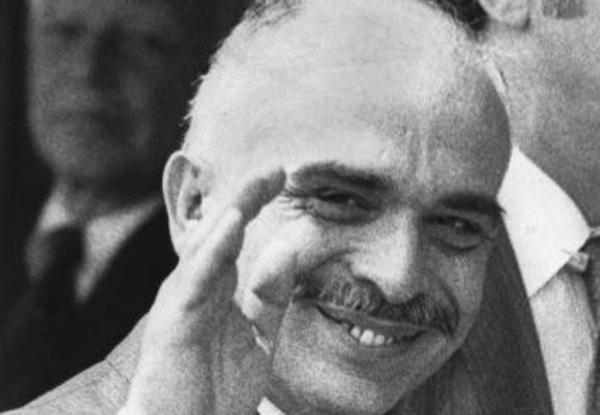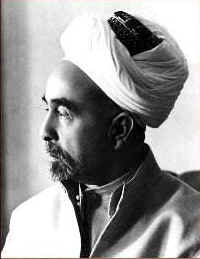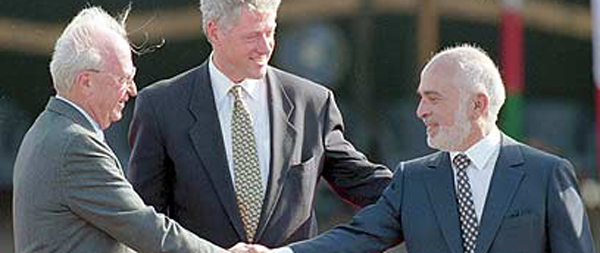Jordan Contemporary History
When Abdullah I was assassinated·in 1951, he was succeeded on the throne by King Hussein. Hussein was a charismatic and farsighted king who was popular with both Western and other Arab governments, as well as with the Jordanian public.

Third Period of Jordan History—From the Great Arab Revolt of 1916 to the Present
The third period is significant because it encompasses almost all of the political and economic developments involved in the modern state of Jordan. It begins with Hussein bin Ali (1854-1931), the direct ancestor of the present line of kings of Jordan, who declared Arab independence against the Turkish Ottoman Empire and proclaimed the Great Arab Revolt of 1916. 
That revolt was led by Hussein bin Ali’s sons, the charismatic Feisal, and his quieter son, Abdullah. With the advice of the most famous Western romantic hero of the First World War, British Major T. E. Lawrence, Feisal and Abdullah led the Bedouin tribes who successfully captured the Turkish garrison at Aqaba, convincing the British to support the Arab revolt against the Ottomans.
Thereafter, much of the rest of the war was fought from headquarters in Petra from which guerilla war was waged upon the Turkish railroad line running through Amman. The events of this war are dramatically depicted in the 1962 film “Lawrence of Arabia,” starring Peter O’Toole and Omar Sharif.
During the First World War, Britain and France secretly entered into the Sykes-Picot Treaty to redraw the map of the Middle East. The League of Nations chose to ignore Hussein bin Ali’s, Feisal’s, and Abdullah’s dreams of forming an independent Arab state. Instead, France was given a mandate to rule Syria, and Britain the mandate to rule Palestine and Transjordan.
Feisal was later made King of Iraq, but was shortly thereafter deposed. Abdullah became first Emir of Jordan in 1925. He successfully steered Jordan through the 1920s, the second Arab Revolt in the 1930s, and the Second World War. In 1946, when Jordan was granted independence from Britain, Abdullah was proclaimed Abdullah I, the first king of the Hashemite Kingdom of Jordan. 
When, in 1948, the British abandoned their Mandate in Palestine, part of it became the new state of Israel, but the remainder—the Palestinian West Bank—was left without any government and fell by default to its neighbor, Jordan, which reluctantly incorporated it in 1951. Many Palestinian refugees from the partition of Palestine and the 1948 war immigrated to Jordan.
When Abdullah I was assassinated in 1951, he was succeeded on the throne by King Hussein. Hussein was a charismatic and farsighted king who was popular with both Western and other Arab governments, as well as with the Jordanian public.
In 1952, Jordan adopted a new constitution providing for a bicameral legislature. Elections for the lower house of parliament took place in that year. During the 1950s, Jordan was considered to be one of the freest and most liberal countries in the Middle East.
When Abdullah I was assassinated· in 1951, he was succeeded on the throne by King Hussein.
Then as the Arab-Isreali wars approached tensions mounted, and martial law had to be imposed. Jordan sided with the other Arab powers in the Arab-Israeli wars of 1967 and 1973. The defeats in both of those wars were followed by many consequences, one of which was a vast new influx of Palestinian refugees. Today, between one-third to one-half of Jordan’s population is descended from these refugees.
Immediately after those wars, King Hussein sought to follow a path of moderation and accommodation, looking primarily toward the economic development of the country. Over the next 20 years, King Hussein made three important strategic decisions which have set the course of Jordan into the 21st century
First, he refused to align Jordan with the Soviets, as many other Arab states were then doing, preferring instead to maintain Jordan’s ties to the West, particularly the United States and Britain. 
Second, in 1974 and 1985 Jordan entered into agreements relinquishing its claims to the Palestinian West Bank to the PLO, and recognizing the PLO as the sole representative of the Palestinians in the West Bank. This removed most of the direct conflicts between Israel and Jordan.
Third, he chose to follow the lead of Egypt in making an accommodation with Israel. This took the form of a memorandum of understanding with Israel in 1988, resulting in the signing a formal peace treaty in 1994.
This treaty formally ended the state of war existing since the wars of 1967 and 1973, relinquished any remaining territorial claims vis-à-vis Israel to the Palestinian West Bank (though retaining some administrative authorities over the Temple Mount in Jerusalem), and established normal economic and diplomatic relations between Jordan and Israel.
This enabled King Hussein to chart a new course for Jordan, which consisted of three new goals or strategies.
1, The first was to reestablish democracy in Jordan. The 1988 understanding with Israel enabled him to lift martial law in 1989, and in 1993 Jordan held its first elections in over 25 years for a new parliament. Over the past two decades Jordan has been one of the most stable countries in the Middle East.

2, The second goal was to pursue regional and international cooperation agreements, and open up Jordan to as many Free Trade Agreements (FTAs) as possible. King Hussein began laying the groundwork for a myriad of regional and international trade agreements, most of which were successfully consummated after his death by his successor, King Abdullah II.
3, Third, to pursue economic development by every means available. This involved, first, obtaining financial and developmental aid primarily from the US and EU; and, second, encouraging foreign direct investment (FDI).
Such aid began to rise in 1995, becoming quite substantial by the time of King Hussein’s death in 1999; and has continued to rise even more since then. Since 1995, Jordan has attracted substantial FDI, and by 2000 its economy began growing 6%-7% annually, reaching a high of over 8% growth in 2004.
In the eleven years since Abdullah became king in 1999, all of these goals have been advanced spectacularly